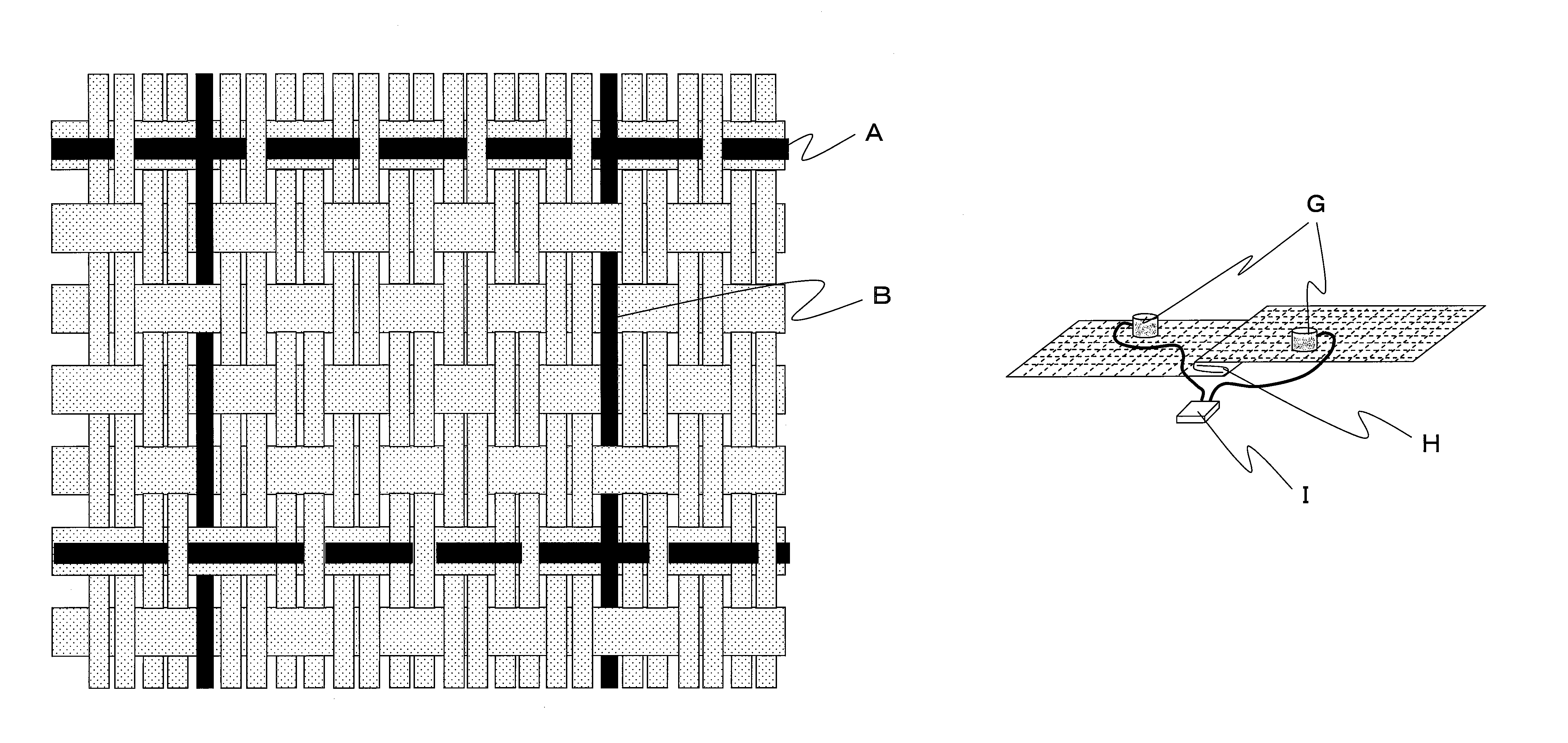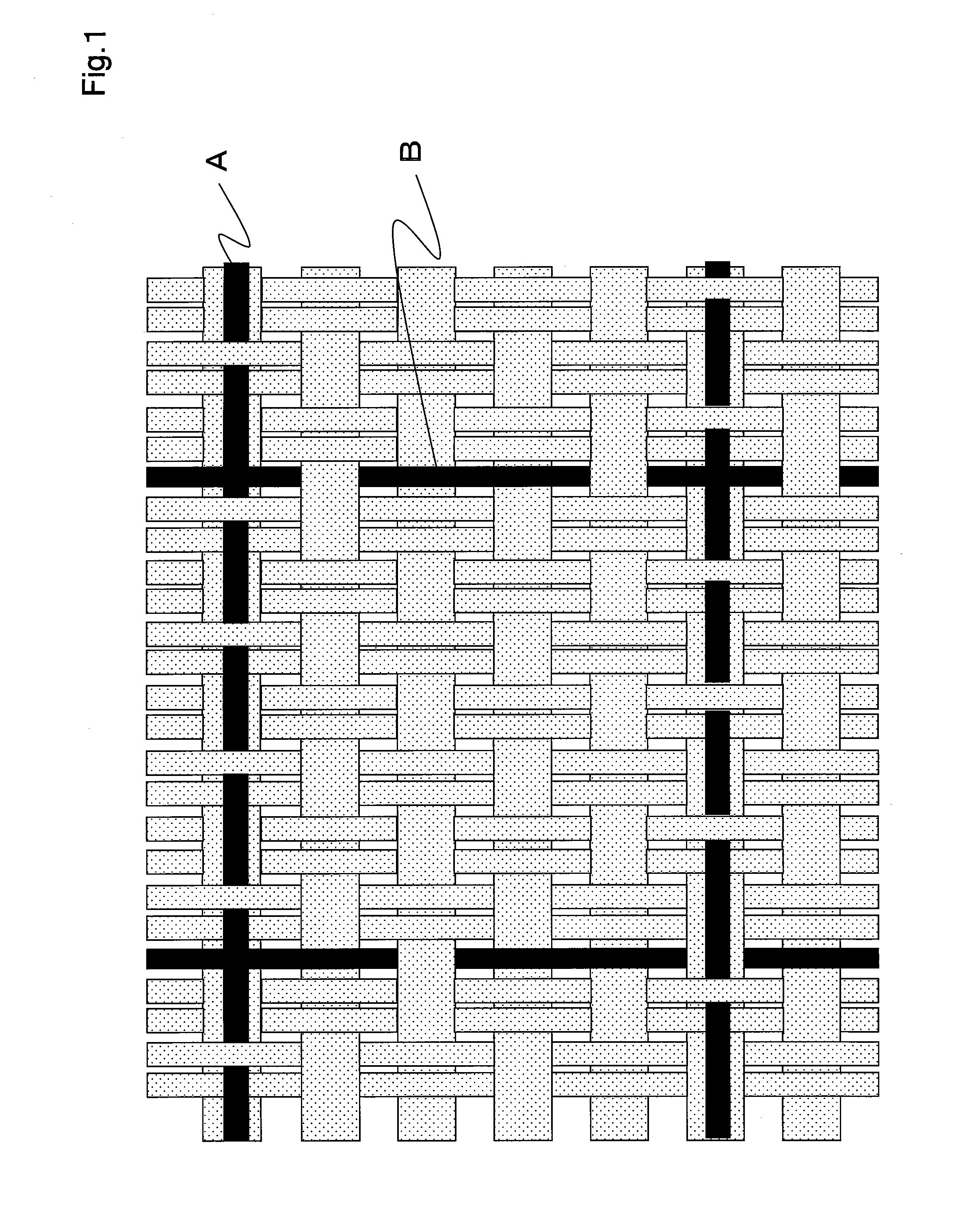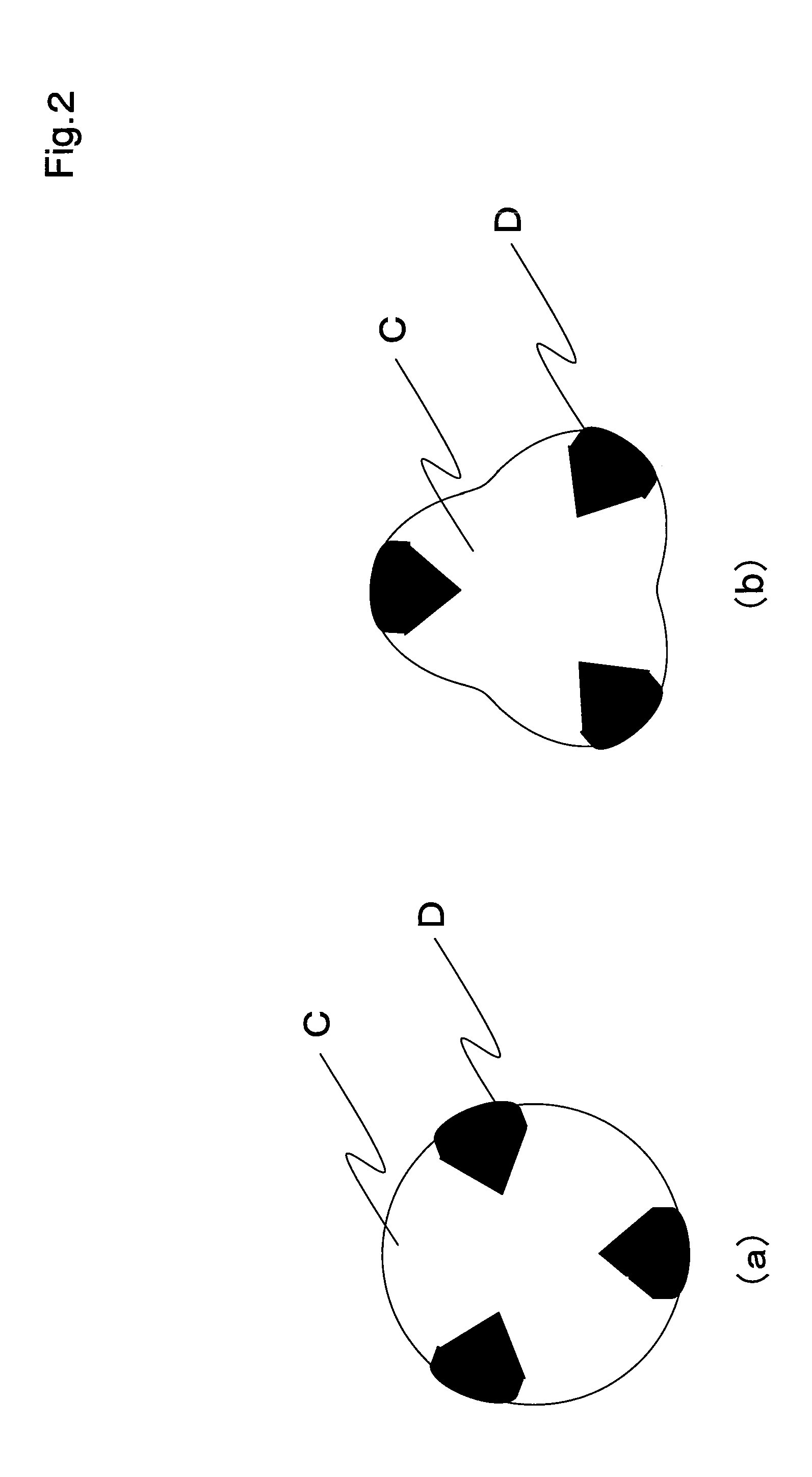Sewn product and clothes
a technology of sewn products and clothes, applied in the direction of sewing stitches, weaving, protective fabrics, etc., can solve the problems of not only the durability of conductive materials but also the high cost, and achieve the effect of preventing the electroconductive property in seams and surface electroconductive properties
- Summary
- Abstract
- Description
- Claims
- Application Information
AI Technical Summary
Benefits of technology
Problems solved by technology
Method used
Image
Examples
example 1
[0056]Using two-ply yarn of polyester false twist yarn (84 decitex, 36 filaments) as a warp forming base weave and polyester false twist yarn (334 decitex, 96 filament) as a weft, and as a warp conductive yarn and a weft conductive yarn, a conductive yarn (84 decitex, 9 filaments) composed of surface exposing type yarn shown in FIG. 2 was used. The weave was made as shown in FIG. 1 in such manner that base weave was plain fabric (one-sided mat), and the warp conductive yarns were disposed by dobby weave in a ratio of every 24 yarns of base warps (pitch 5 mm) in skipping over 2 yarns in the obverse side, and one yarn in the reverse side. Additionally, the weave was made as shown in FIG. 1 in such manner that the weft conductive yarns were inserted in a ratio of every 11 yarns of base wefts in weft double weave (pitch 5 mm), and disposed on the base weft (namely being float yarn) in skipping over 3 yarns in the obverse side, and one yarn in the reverse side. In this way, a gray fabric...
example 2
[0058]Using the fabric obtained in Example 1 and setting seam allowance width to 15 mm, stitching was carried out by a double chain stitch sewing machine. A twisted yarn of 60 count filament was used as a sewing thread, and stitching was carried out by 2 stitches (seam) in three-rolled seam (see FIG. 5 (j)) and needle interval of 6 mm. After carrying out washing treatment in the same condition as Example 1, surface resistances were measured. Various data are shown in Table 1.
example 3
[0059]Using the same yarns as Example 1, the weave was made as shown in FIG. 1 in such manner that base weave was plain fabric (one-sided mat), and the warp conductive yarns were disposed by dobby weave in a ratio of every 48 yarns of base warps (pitch 10 mm) in skipping over 2 yarns in the obverse side, and one yarn in the reverse side. The weave was made as shown in FIG. 1 in such manner that the weft conductive yarns were inserted in a ratio of every 22 yarns of base wefts in weft double weave (pitch 10 mm), and disposed on the base weft (namely being float yarn) in skipping over 3 yarns in the obverse side, and one yarn in the reverse side. In this way, a gray fabric of 141 yarns / 2.54 cm in warp density and 57 yarns / 2.54 cm in weft density was produced. This gray fabric was refined, dyed and finished according to the common method to obtain a fabric of 153 yarns / 2.54 cm in finish warp density and 62 yarns / 2.54 cm in weft density.
[0060]Using the fabric obtained and setting seam a...
PUM
| Property | Measurement | Unit |
|---|---|---|
| temperature | aaaaa | aaaaa |
| electric voltage | aaaaa | aaaaa |
| width | aaaaa | aaaaa |
Abstract
Description
Claims
Application Information
 Login to View More
Login to View More - R&D
- Intellectual Property
- Life Sciences
- Materials
- Tech Scout
- Unparalleled Data Quality
- Higher Quality Content
- 60% Fewer Hallucinations
Browse by: Latest US Patents, China's latest patents, Technical Efficacy Thesaurus, Application Domain, Technology Topic, Popular Technical Reports.
© 2025 PatSnap. All rights reserved.Legal|Privacy policy|Modern Slavery Act Transparency Statement|Sitemap|About US| Contact US: help@patsnap.com



